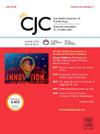你的心脏看不到你穿的是什么运动鞋:耐力运动员的运动训练负荷在运动心脏病学中没有充分量化——一项系统回顾。
IF 5.8
2区 医学
Q1 CARDIAC & CARDIOVASCULAR SYSTEMS
引用次数: 0
摘要
背景:训练负荷可能是耐力运动引起的(病理)生理性心血管适应的重要因素。然而,量化训练负荷仍然具有挑战性,因为其组成部分(频率、强度、时间和类型;F.I.T.T)。本系统综述旨在评估运动心脏病学研究中训练负荷是如何量化的,并就如何改进训练负荷提出建议。方法:对PubMed和EMBASE进行综合检索,截止到2024年10月。研究包括“运动心脏病学”、“训练负荷”和“耐力运动”。数据提取包括研究特征、训练负荷评估方法、心血管结局和运动员概况。结果:共纳入62项研究,1,060,700名参与者。大多数研究(59.7%)集中于运动诱导的心脏重构,而其他主题包括心律失常(12.9%)、心脏自主神经适应(3.2%)、运动剂量反应(6.5%)和冠心病(17.7%)。训练负荷主要通过问卷量化(58.1%),而心率监测(一种更客观的测量方法)仅在1.6%的研究中使用。所有的研究都报告了运动类型,但只有19.4%的研究测量了所有的F.I.T.T成分。结论:在运动心脏病学领域,量化训练负荷的关键F.I.T.T变量评估缺乏一致性,许多研究依赖于主观或不完整的方法。随着心脏病学进入精准医学时代,研究人员和临床医生应该根据F.I.T.T框架寻求从运动员那里获得客观的训练负荷信息,而来自客观可穿戴设备的数据代表了实现这一目标的最佳途径。本文章由计算机程序翻译,如有差异,请以英文原文为准。
Your Heart Can’t See What Sneakers You Are Wearing: Exercise Training Load in Endurance Athletes Is Inadequately Quantified in Sports Cardiology
Background
Training load may be an important factor underlying the (patho-)physiologic cardiovascular adaptations from endurance exercise. Yet, quantifying training load remains challenging due to the complexity of its components (Frequency, Intensity, Time, and Type [FITT]). In this systematic review we evaluate how training load has been quantified in sports cardiology studies and provide recommendations for how this can be improved.
Methods
A comprehensive search was conducted across PubMed and EMBASE up to October 2024. Studies involving "sports cardiology," "training load," and "endurance sport" were included. Data extraction included study characteristics, training load assessment methods, cardiovascular outcomes, and athlete profiles.
Results
A total of 62 studies with 1,060,700 participants were included in our review. The majority of studies (59.7%) focused on exercise-induced cardiac remodelling, with other topics being cardiac arrhythmias (12.9%), cardiac autonomic adaptation (3.2%), exercise dose-response (6.5%), and coronary heart disease (17.7%). Training load was primarily quantified by questionnaires (58.1%), whereas heart rate monitoring, a more objective measure, was used in only 1.6% of the studies. All studies reported exercise type, but only 19.4% measured all FITT components.
Conclusions
There is a lack of uniformity in the assessment of key FITT variables to quantify training load within the field of sports cardiology, with many studies relying on subjective or incomplete methods. As cardiology moves into the precision medicine era, researchers and clinicians should seek to obtain objective training load information from their athletes according to the FITT framework, and data from use of objective wearable devices represent the optimal way to do this.
求助全文
通过发布文献求助,成功后即可免费获取论文全文。
去求助
来源期刊

Canadian Journal of Cardiology
医学-心血管系统
CiteScore
9.20
自引率
8.10%
发文量
546
审稿时长
32 days
期刊介绍:
The Canadian Journal of Cardiology (CJC) is the official journal of the Canadian Cardiovascular Society (CCS). The CJC is a vehicle for the international dissemination of new knowledge in cardiology and cardiovascular science, particularly serving as the major venue for Canadian cardiovascular medicine.
 求助内容:
求助内容: 应助结果提醒方式:
应助结果提醒方式:


